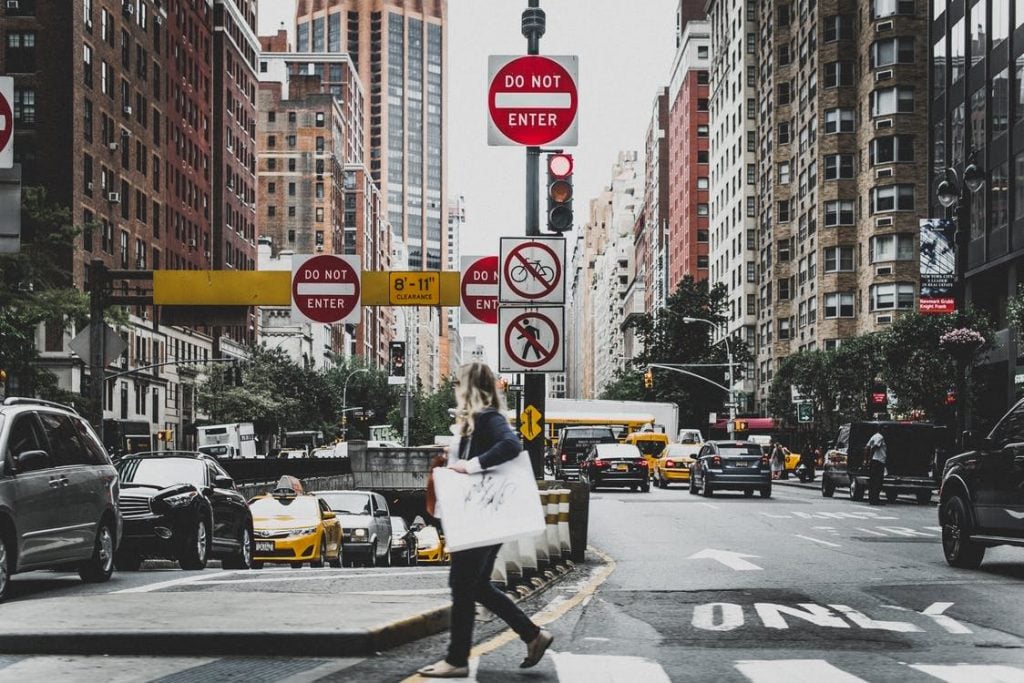Written By: Patrick Brown and Courtney Stewart, Summer Student
The primary cause for pedestrians getting hit or killed on our roads is driver misconduct, vehicle speed, and deficient infrastructure that allows pedestrians to cross the street safely.
Many people have a mistaken understanding of what the law is when it comes to pedestrians crossing the street. First and fore mostly, the pedestrian has the right of way. All vehicles must look for, and yield to, pedestrians regardless of where and when they are on the roadway. The consequences of hitting a pedestrian with a two ton car can be lethal to the pedestrian and a small dent to the car.
Motorists should also understand that crossing the street is not automatically jaywalking. In fact, the Toronto police use a rule of thumb that jay walking only happens if one is within 30 meters of the intersection or crosswalk. The courts have even considered shorter distances when considering these tickets.
In order to assist in providing safe crossing to pedestrians, municipalities are required to build infrastructure that allows them to do so. Not only should they assist in allowing all individuals to safely cross, they must pay particular attention to areas where children play and the elderly live.
Pedestrian Crossovers vs Crosswalks
Pedestrian crossovers are a new type of street crossing regulated by the Ontario government. At these crossings drivers must wait until pedestrians have completely crossed the road – curb to curb – before continuing. These crossovers are marked by specific signs and pavement markings. They might also have pedestrian-activated flashing lights beside or above the roadway.
Signs that might appear at or before pedestrian crossovers include:
The pedestrian crossover rules also apply at all school crossings. School crossings are any crossing where a school crossing guard is present and using a red-and-white stop sign. Drivers who do not follow the pedestrian crossover rules can be fined up to $500 in a regular zone, up to $1,000 in a community safety zone, and receive three demerit points. A crosswalk is the most common form of pedestrian crossing. They appear most often at intersections with traffic signals or stop signs. At these crosswalks, although the law does not require drivers to wait until pedestrians have completely crossed the road to continue – a prudent and safe driver will.
What Should Drivers Do When Approaching Pedestrians Crossings?
- Reduce your speed. A pedestrian hit at speed of 64 kmph or more has an 85 percent chance of death. The rate is dramatically lowered to 5 percent if the driver is travelling at 32 kmph. By lowering your speed, your ability to avoid hitting a pedestrian is significantly increased.
- Put the phone down. Not only is it illegal, it takes your eyes off the road and significantly increases the risk of you killing someone.
- Where visibility is poor, such as rain, fog, or snow, slow your car down to ensure you can see what is in front of you. Impaired visibility is impaired driving.
- Be mindful of the road conditions. If your stopping distance is increased by rain or snow, then slow down. If you are not comfortable with the conditions, stop and wait until it blows over.
- Always be on the look out for pedestrians, especially when turning, when in school zones, residential areas, the city core or Community Safety Zones.
- Be patient with seniors or those who might need extra time while crossing
- Be mindful. Children are unpredictable.
- At or near pedestrian crossovers:
- Be prepared to stop for pedestrians
- Stop behind the yield line when pedestrians are present
- Make eye contact so that pedestrians know you see them
- Wait until the pedestrians have completely crossed the road before proceeding
- Do not pass other vehicles within 30 metres before a pedestrian crossover
- At crosswalks:
- Obey all safety signs
- Do not rush a yellow light
- Stop completely at all stop signs – do not make rolling stops
- Stop behind painted stop bars
- Before proceeding through an intersection make eye contact with any pedestrians in the area
The primary responsibility for pedestrian safety falls upon those driving cars. This does not mean however that pedestrian should not pay attention whenever they are near a roadway. In fact, we need to continue to teach safe crossing in our schools as we have done for years. All pedestrians, young and old, should consciously remind themselves that not all drivers behave responsibly. Therefore added caution and awareness should be used at all times whenever approaching or crossing the road. You never know who is behind the wheel.







